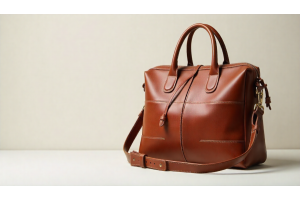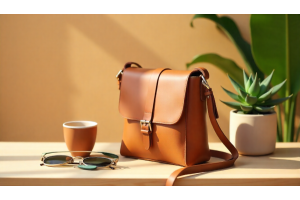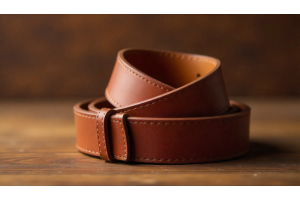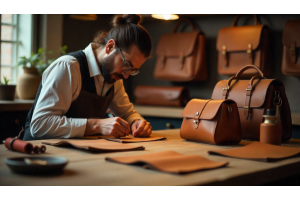Is Sustainable Leather Really Possible? A Deep Dive into Ethical Alternatives
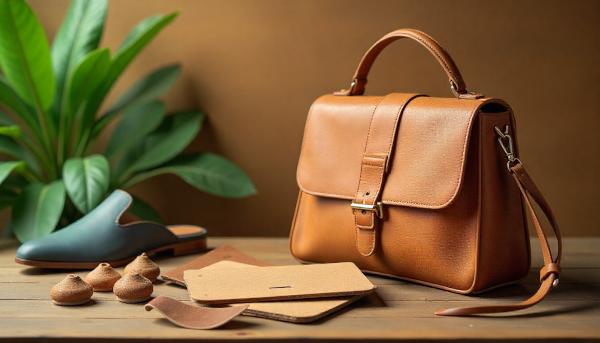
Is Sustainable Leather Really Possible? A Deep Dive into Ethical Alternatives
Leather has always been admired for its durability, texture, and timeless appeal. But in today’s sustainability-driven world, a question keeps coming up — can leather ever be truly sustainable? The fashion industry is evolving, and brands are now exploring ethical sourcing, eco-friendly tanning, and cruelty-free alternatives to redefine what leather means in 2025.
Table Of Content
The Truth About Leather and Sustainability
Let’s be honest — leather has always been a controversial material. It’s durable, stylish, and timeless, yet its production often raises questions about animal welfare and environmental harm. But here’s the good news: sustainable leather is not just a buzzword anymore — it’s becoming a real possibility.
In 2025, more brands are shifting toward responsible sourcing, waste reduction, and transparency, proving that luxury and ethics can coexist. Sustainable leather doesn’t mean giving up on quality; it means choosing smarter methods and materials that respect both people and the planet.
Tip
When choosing leather, prioritize ethically sourced or plant-based options, invest in high-quality pieces, and maintain them properly — this ensures style, longevity, and a smaller environmental footprint.
How Sustainable Leather Is Made
Traditional leather production involves toxic chemicals, heavy water use, and carbon emissions. Sustainable leather turns that around by improving every step — from sourcing to tanning.
Key Sustainable Processes:
- Vegetable tanning: Uses plant-based extracts instead of harmful chromium salts.
- Water recycling systems: Reduce waste and pollution in tanneries.
- Byproduct sourcing: Hides are taken from the meat industry rather than farmed for leather.
- Natural dyes and low-energy drying: Minimize carbon output.
These steps create leather that’s safer for the environment, healthier for workers, and still beautifully durable.
The Rise of Vegan and Alternative Leathers
With growing awareness, vegan leather and plant-based materials like mushroom leather, cactus leather, and apple leather are gaining traction. These materials offer similar aesthetics and durability but skip animal involvement entirely.
| Material Type | Source | Eco Impact | Durability |
|---|---|---|---|
| Mushroom Leather | Mycelium (fungi roots) | Biodegradable & renewable | Moderate to high |
| Cactus Leather | Nopal cactus | Minimal water use | High |
| Apple Leather | Apple waste | Recycled & eco-friendly | Medium |
| Recycled Leather | Scraps reprocessed | Reduces landfill waste | High |
Challenges in Making Leather Truly Sustainable
Even with better practices, sustainability in leather production is complex. Water consumption, chemical runoff, and energy use remain concerns. Many brands are experimenting with cleaner technologies, but a fully circular leather system still has a long way to go.
Main Challenges:
- Difficulty verifying ethical sources.
- Limited large-scale vegan leather production.
- Durability differences between plant-based materials.
- Cost and accessibility for consumers.
How to Shop for Ethical Leather
If you love leather but want to shop responsibly, look for brands that value transparency, certifications, and craftsmanship.
Ethical Shopping Tips:
- Check for Leather Working Group (LWG) or OEKO-TEX certifications.
- Prefer vegetable-tanned or chrome-free leather.
- Support brands using recycled materials or upcycled leather.
- Choose timeless designs that last for years.
Why Ethical Leather Matters
Ethical leather bridges the gap between tradition and sustainability. It respects craftsmanship while aligning with modern eco-values. Choosing responsibly made leather helps reduce waste, supports artisans, and promotes circular fashion.
Conclusion
When choosing leather, think long-term. Opt for sustainably sourced, ethically produced, and repairable pieces that stand the test of time — style should never come at the planet’s expense.
FAQS
Q1: What makes leather sustainable?
Sustainable leather uses eco-friendly tanning methods, ethical sourcing, and long-lasting materials that minimize waste.
Is vegan leather better for the environment?
In many cases, yes — especially when made from plant-based materials. However, some synthetic versions still use plastic derivatives, so always check the material source.
Q3: How can I identify eco-friendly leather brands?
Look for certifications, transparent sourcing details, and a clear sustainability policy on their website.
Q4:Does sustainable leather last as long as traditional leather?
Yes, high-quality sustainable leather can last decades if cared for properly — often even longer than fast-fashion alternatives.
Q5: What’s the best option — genuine or vegan leather?
It depends on your values. Genuine ethical leather supports natural durability, while vegan leather avoids animal use. The key is to choose consciously produced materials.
Q6: What is vegetable-tanned leather?
Vegetable-tanned leather uses natural plant extracts for tanning instead of harmful chemicals, making it more eco-friendly and biodegradable while developing a rich patina over time.
Q7: Are recycled leather products as durable as new leather?
Yes, recycled leather made from high-quality scraps can be just as durable as new leather, while also reducing waste and environmental impact.
Q8: How does plant-based leather compare to animal leather?
Plant-based leathers, like mushroom or cactus leather, are cruelty-free and eco-conscious. They are durable, lightweight, and increasingly comparable in texture and longevity to traditional animal leather.
Q9: Can sustainable leather be stylish and trendy?
Absolutely. Modern sustainable leather products combine ethical sourcing with innovative designs, offering stylish, functional, and timeless fashion choices.
Q10: Why should consumers care about sustainable leather?
Choosing sustainable leather reduces environmental impact, supports ethical labor practices, and encourages brands to adopt responsible production methods — making fashion more conscious and future-friendly.


